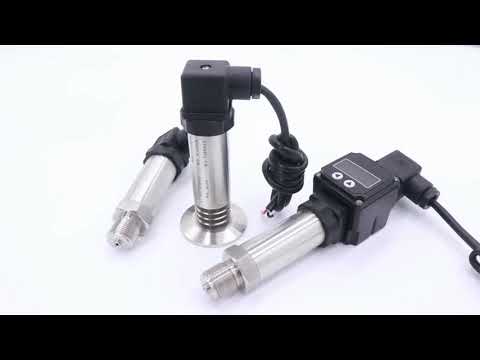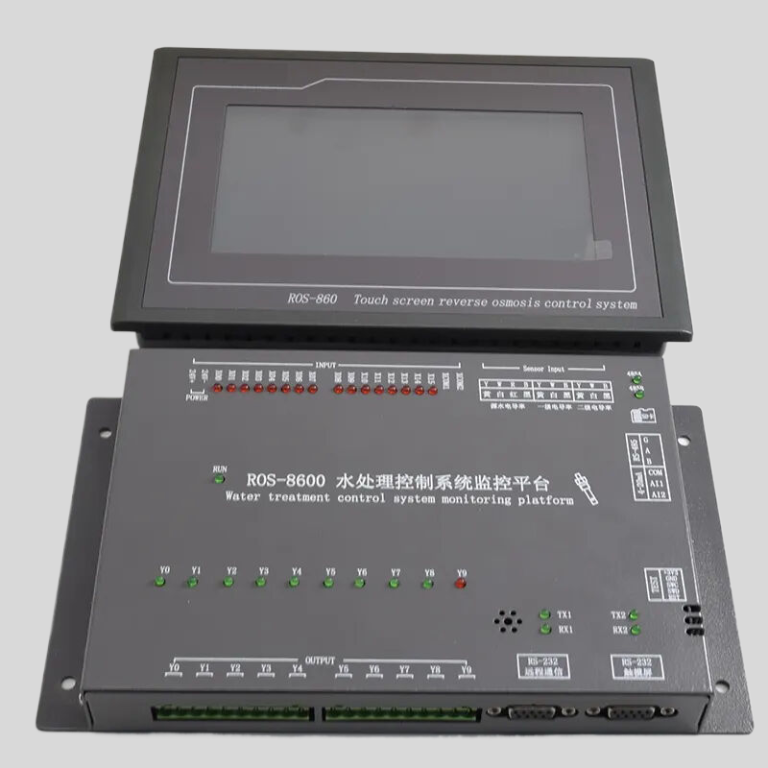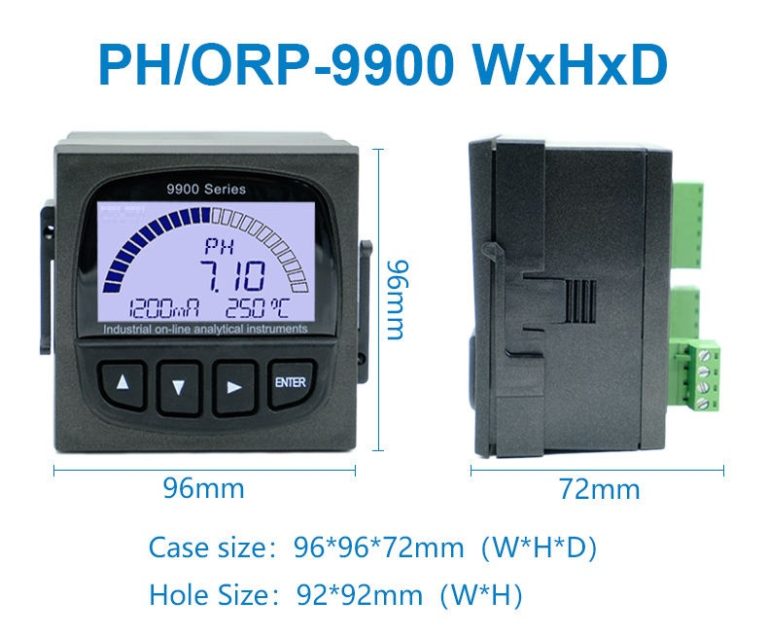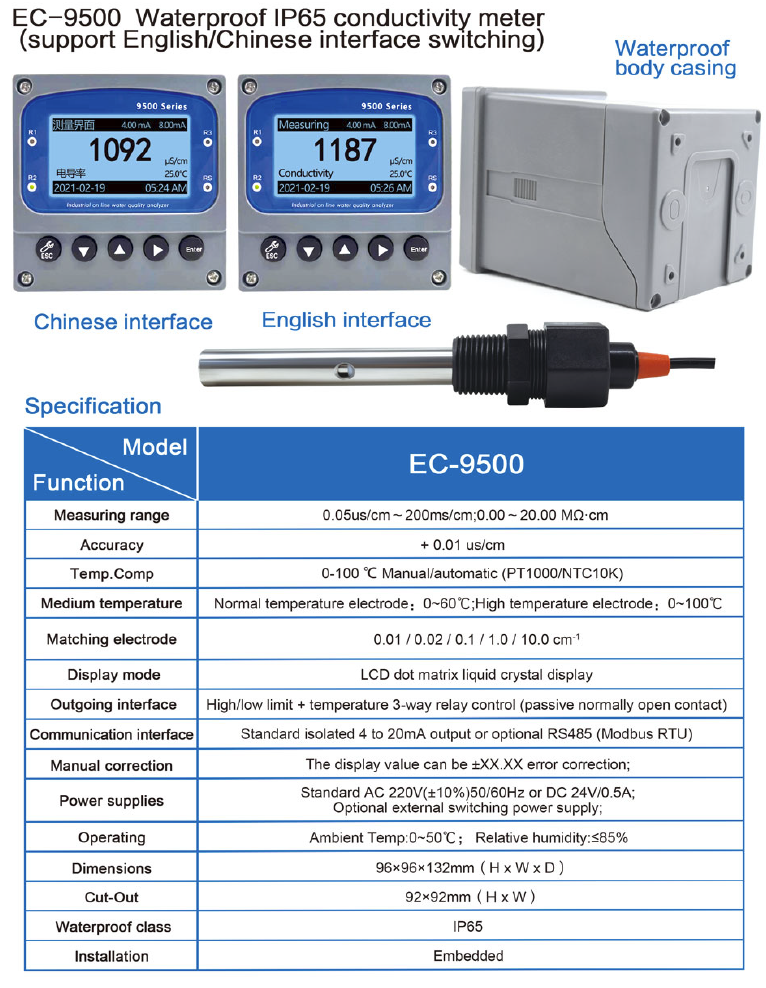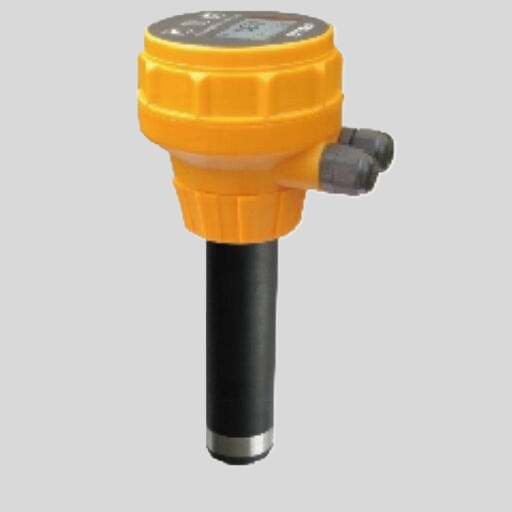The Importance of Using a TDS Meter for Monitoring Water Quality
Water is an essential resource for all living organisms, and ensuring its quality is crucial for maintaining the health and well-being of both humans and the environment. One of the key parameters used to assess water quality is Total Dissolved Solids (TDS), which refers to the total concentration of dissolved substances in water. Monitoring TDS levels can provide valuable insights into the overall quality of water and help identify potential contaminants that may pose a risk to human health.
| Model No. | CIT-8800 Inductive Conductivity / Concentration Online Controller | |
| Measurement range | Conductivity | 0.00μS/cm ~ 2000mS/cm |
| Concentration | 1.NaOH,(0-15)% or(25-50)%; | |
| 2.HNO3(note the Corrosion resistance of the sensor)(0-25)% or(36-82)%; | ||
| 3.User-defined concentration curves. | ||
| TDS | 0.00ppm~1000ppt | |
| Temp. | (0.0 ~ 120.0)℃ | |
| Resolution | Conductivity | 0.01μS/cm |
| Concentration | 0.01% | |
| TDS | 0.01ppm | |
| Temp. | 0.1℃ | |
| Accuracy | Conductivity | 0μS/cm ~1000μS/cm ±10μS/cm |
| 1 mS/cm~500 mS/cm ±1.0% | ||
| 500mS/cm~2000 mS/cm ±1.0% | ||
| TDS | 1.5 level | |
| Temp. | ±0.5℃ | |
| Temp. compensation | element | Pt1000 |
| range | (0.0~120.0)℃ linear compensation | |
| (4~20)mA Current output | channels | Double channels |
| features | Isolated, adjustable, reversible, 4-20MA output, instruments/ transmitter mode. | |
| Loop resistance | 400Ω(Max),DC 24V | |
| Resolution | ±0.1mA | |
| Control contact | Channels | Triple channels |
| Contact | Photoelectric relay output | |
| Programmable | Programmable ( temperature 、conductivity/concentration/TDS、timing)output | |
| Features | Could set temperature、conductivity/concentration/TDS、 timing NO/NC/ PID selection | |
| Resistance load | 50mA(Max),AC/DC 30V(Max) | |
| Data communication | RS485,MODBUS protocol | |
| Power supply | DC 24V±4V | |
| Consumption | <5.5W | |
| Working environment | Temperature:(0~50)℃ Relative Humidity:≤85%RH(non- condensing ) | |
| Storage | Temperature:(-20~60)℃ Relative Humidity:≤85%RH(non- condensing) | |
| Protection level | IP65(with rear cover) | |
| Outline dimension | 96mm×96 mm×94mm (H×W×D) | |
| Hole dimension | 91mm×91mm(H×W) | |
| Installation | Panel mounted , fast installation | |
One of the most effective tools for measuring TDS levels in water is a TDS Meter. These handheld devices are easy to use and provide accurate and reliable measurements of TDS levels in a matter of seconds. By regularly monitoring TDS levels, individuals can track changes in water quality over time and take appropriate actions to address any issues that may arise.

TDS meters work by measuring the electrical conductivity of water, which is directly related to the concentration of dissolved solids present. When dissolved solids such as salts, minerals, and organic matter are present in water, they increase its conductivity, allowing the TDS Meter to calculate the total concentration of these substances. By measuring TDS levels, individuals can quickly assess the overall quality of water and determine whether it is safe for consumption or other uses.
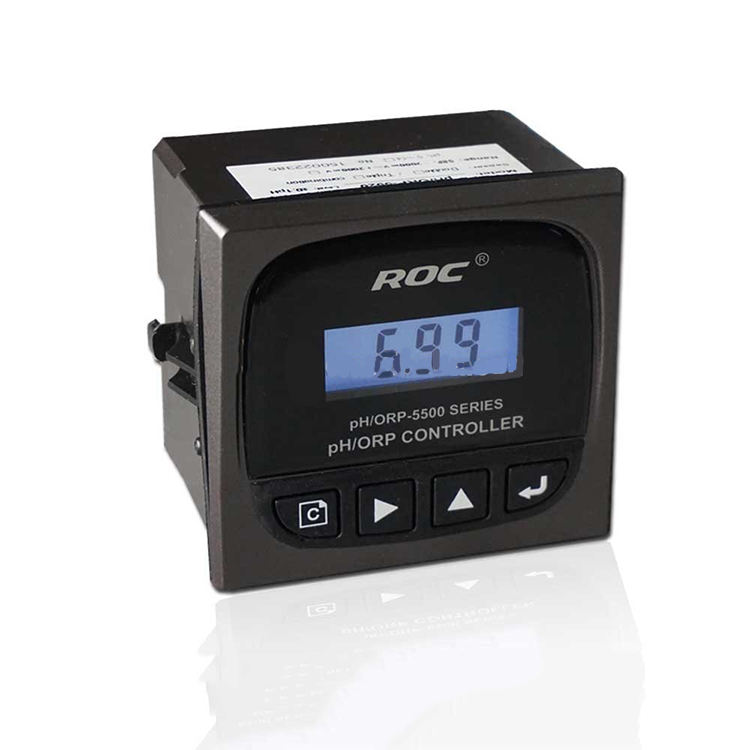
In addition to measuring TDS levels, TDS meters can also be used to monitor the effectiveness of water treatment systems. By testing the TDS levels of water before and after treatment, individuals can determine how well the system is removing contaminants and ensuring the water meets quality standards. This information can be invaluable for ensuring the safety of drinking water and maintaining the efficiency of water treatment systems.
Furthermore, TDS meters can be used to identify potential sources of contamination in water sources. High TDS levels can indicate the presence of pollutants such as industrial runoff, agricultural chemicals, or sewage, which can pose serious health risks if consumed. By regularly testing TDS levels in water sources, individuals can pinpoint the sources of contamination and take steps to address them before they become a more significant problem.
| Model | RM-220s/ER-510 resistivity controller |
| Range | 0-20uS/cm; 0-18.25MΩ |
| Accuracy | 2.0%(FS) |
| Temp. Comp. | Automatic temperature compensation based on 25℃ |
| Oper. Temp. | Normal 0~50℃; High temp 0~120℃ |
| Sensor | 0.01/0.02 cm-1 |
| Display | LCD Screen |
| Communication | ER-510:4-20mA output/RS485 |
| Output | ER-510:High/Low limit dual relay control |
| Power | AC 220V±10% 50/60Hz or AC 110V±10% 50/60Hz or DC24V/0.5A |
| Working Environment | Ambient temperature:0~50℃ |
| Relative humidity≤85% | |
| Dimensions | 48×96×100mm(H×W×L) |
| Hole Size | 45×92mm(H×W) |
| Installation Mode | Embedded |
Overall, using a TDS Meter for monitoring water quality is essential for ensuring the safety and purity of water for both human consumption and environmental health. By regularly testing TDS levels, individuals can track changes in water quality, assess the effectiveness of water treatment systems, and identify potential sources of contamination. With accurate and reliable measurements provided by TDS meters, individuals can take proactive steps to protect water resources and ensure they remain clean and safe for future generations.

